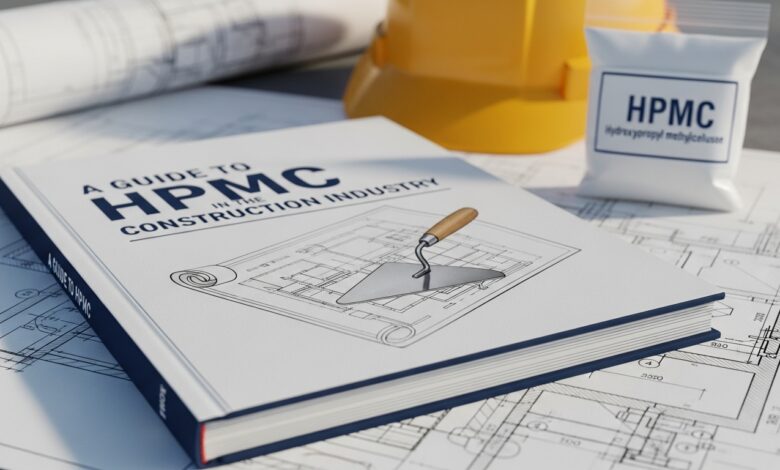A Guide to HPMC in the Construction Industry

SHENGDA HPMC: The Ultimate Guide to Its Properties & Uses in Construction
In the world of modern building materials, achieving superior performance and efficiency is paramount. Enter HPMC (Hydroxypropyl Methylcellulose), a leading cellulose ether that acts as a critical additive in countless applications. This guide provides a comprehensive look at the characteristics of SHENGDA HPMC and its vital role in the construction industry, establishing it as an indispensable material for quality building.
What is HPMC (Hydroxypropyl Methylcellulose)?
HPMC, or Hydroxypropyl Methylcellulose, is a non-ionic, water-soluble cellulose ether derived from natural polymer cellulose (like refined cotton or wood pulp). Think of it as a high-performance, modified version of natural fiber, scientifically engineered to perform three critical jobs:
- Excellent Water Retention:It locks moisture into materials like mortar and plaster, preventing them from drying out too quickly.
- Efficient Thickening:It increases the viscosity of liquids, improving the consistency and anti-sag properties of products like paints and adhesives.
- Reliable Binding:It acts as a powerful binder, enhancing the adhesion and cohesion of various building materials.
Key Physicochemical Properties of HPMC
The effectiveness of SHENGDA HPMC comes from its special properties. These properties let it act as a master “consistency controller” in building materials.
- Controlled Viscosity & Solubility:As a water-soluble polymer, HPMC dissolves easily in cold water. Manufacturers can precisely tailor the HPMC viscosity (from low to very high, e.g., 200,000 cps) to meet specific application needs, ensuring perfect workability for everything from tile adhesives to self-leveling compounds.
- Superior Water Retention:Excellent water retention is HPMC’s most crucial feature in construction. It ensures that cement and gypsum have sufficient time for hydration, which is essential for developing strength, preventing surface cracking, and improving the overall durability of the final structure.
- Thermal & Chemical Stability:Our cellulose ether HPMC exhibits outstanding thermal stability and remains effective across a wide range of pH conditions. This robustness ensures consistent performance in diverse building materials and challenging job site environments.
Core Applications of Construction Grade HPMC
Construction grade HPMC is a versatile additive that dramatically improves the performance of cementitious and gypsum-based products.
1. HPMC for Tile Adhesive
In tile adhesives, HPMC is essential for providing long open time, giving installers more time to set and adjust tiles. Its thickening properties also provide excellent anti-slip (or sag) resistance, preventing heavy tiles from sliding down vertical surfaces.
2. HPMC for Wall Putty (Skim Coat)
For wall putty, HPMC ensures a smooth, easy-to-apply consistency. Its excellent water retention prevents the putty from drying too quickly on the wall, allowing for a flawless finish and preventing cracks. It also enhances the adhesion of the putty to the substrate.
3. HPMC for Dry Mix Mortar
In all types of dry mix mortar (including masonry, plastering, and flooring mortars), HPMC improves workability, cohesion, and pumpability. It makes the mortar “creamier” and easier to handle, while its water retention capabilities ensure maximum strength development.
4. HPMC for Gypsum Plaster & Compounds
In gypsum plaster and joint compounds, HPMC controls consistency, improves workability, and increases adhesion. It also helps to control the setting time and prevents cracking, resulting in a smooth, durable surface.

Frequently Asked Questions (FAQ)
1.What are the main benefits of using HPMC in construction?
The primary benefits are improved workability (easier application), enhanced adhesion, superior water retention (leading to less cracking and higher strength), and increased durability of building materials. This results in more efficient construction and higher quality finishes.
2.How does HPMC compare to other cellulose derivatives like MHEC?
While both are cellulose ethers, HPMC vs MHEC often comes down to specific performance needs. HPMC is widely recognized for its strong water retention and balanced thickening efficiency, making it a highly versatile and cost-effective choice for a broad range of applications like dry mix mortar and tile adhesives.
3.Is HPMC an environmentally friendly building material?
Absolutely. HPMC is derived from renewable plant sources and is considered a green, eco-friendly additive. It helps improve material efficiency, reduce waste, and lower the environmental footprint of construction projects.
4.Where can I buy HPMC powder for my business?
You should buy HPMC powder directly from a specialized HPMC manufacturer or a reputable HPMC supplier. This ensures you receive a high-quality, consistent product along with the necessary technical support for your specific application.
Why Choose SHENGDA as Your HPMC Manufacturer?
When you partner with SHENGDA New Materials, you are choosing a leading HPMC supplier dedicated to your success. Our reputation is built on three core strengths:
- Strict Quality Control:We are a trusted HPMC factory that guarantees every batch of our product meets rigorous quality standards for stable, reliable performance.
- Expert Technical Support:Our team provides customized solutions and expert advice to help you select the perfect HPMC grade and viscosity for your needs.
- Consistent & Reliable Supply:We ensure a stable supply chain to keep your production lines running without interruption.
Ready to enhance your products with high-performance HPMC?
Contact SHENGDA New Materials today to request a free sample, get a competitive price quote, or discuss your specific requirements with our technical experts.



